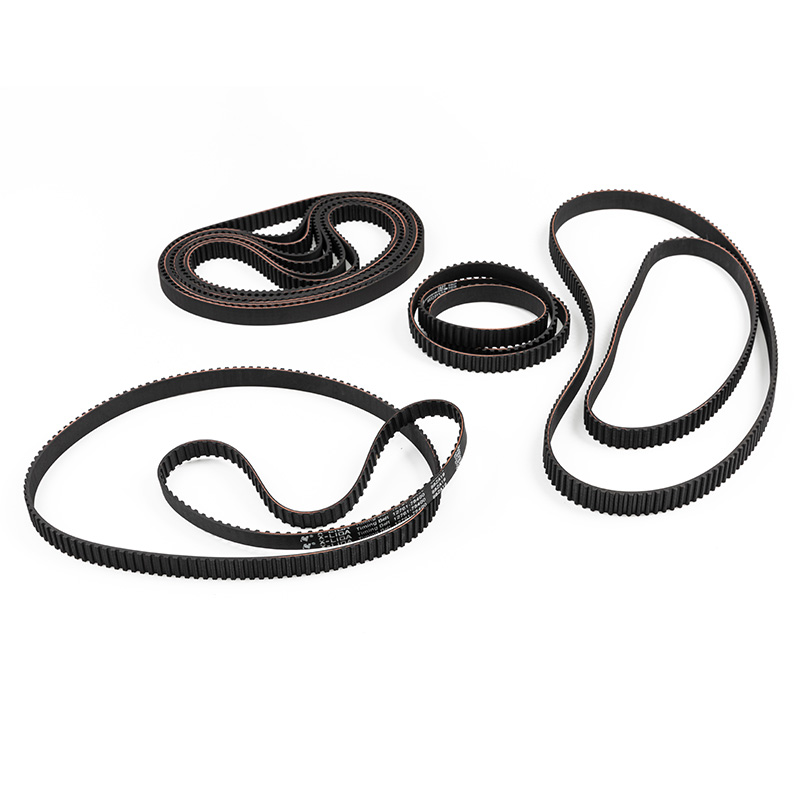To address issues such as slipping, excessive noise, or vibration in a V-belt transmission system, several steps can be taken:
Proper tensioning: Utilize a tensioning gauge or follow the recommended tensioning procedure to ensure that the V-belts are correctly tensioned within the specified range. Over-tensioning can bring about increased stress on bearings, shafts, and other components within the drive system. This excess tension not only accelerates wear but also causes bearings to run hotter, potentially shortening their lifespan. Conversely, under-tensioning results in inadequate grip on the pulleys, bring about slipping during operation, which not only reduces power transmission efficiency but also induces additional stress on the belts, hastening their deterioration.
Alignment: Employ precision alignment tools such as laser alignment devices or dial indicators to meticulously assess the alignment of pulleys. Misalignment, whether angular or parallel, introduces lateral forces on the belts, causing them to track erratically and generating excessive noise and vibration. These forces not only compromise the efficiency of power transmission but also contribute to premature wear of belts, pulleys, and bearings. By investing time and resources in meticulous alignment procedures, you mitigate the risk of these detrimental effects, ensuring smooth, reliable operation and extending the service life of critical components.
Cleanliness: Institute rigorous cleaning protocols to eliminate dust, debris, and oil buildup from both the pulleys and belts. Contaminants not only reduce the coefficient of friction between the belt and pulley surfaces but also embed themselves within the belt material, accelerating wear and compromising performance. Oil contamination can cause belts to swell or soften, bring about reduced tensile strength and increased susceptibility to fatigue failure. By implementing regular cleaning procedures using appropriate cleaning agents and methods, you maintain positive belt-pulley contact, minimize wear, and preserve the integrity of the entire drive system.
Belt condition: Conduct frequent visual inspections of the V-belts to detect signs of wear, such as cracks, fraying, glazing, or material degradation. These visual cues often indicate underlying issues such as improper tensioning, misalignment, or excessive heat, which, if left unaddressed, can result in catastrophic belt failure. Establishing a proactive maintenance schedule enables you to identify and rectify potential issues before they escalate, minimizing downtime and mitigating the risk of costly repairs or replacements.
Pulley condition: Implement comprehensive pulley maintenance procedures to ensure that pulleys remain in positive condition throughout their service life. Regular inspections for signs of wear, damage, or material buildup allow you to identify potential issues early and take corrective action before they compromise system performance. Considerations such as pulley material, surface finish, and dynamic balance are crucial in preventing premature wear and minimizing noise and vibration.
Load distribution: Optimize the design and configuration of multi-belt drive systems to achieve uniform load distribution across all belts. Variations in load distribution can result in uneven tensioning and premature wear of individual belts, as well as induce lateral forces that contribute to misalignment and belt slippage. Utilize advanced design tools and techniques to calculate load sharing among multiple belts, taking into account factors such as belt elasticity, tensioning mechanisms, and pulley geometry. By achieving balanced load distribution, you maximize the efficiency and reliability of the drive system, while minimizing the risk of premature component failure.




 English
English 中文简体
中文简体

 View More >>
View More >> View More >>
View More >> View More >>
View More >> View More >>
View More >> View More >>
View More >> View More >>
View More >> View More >>
View More >> View More >>
View More >> View More >>
View More >> View More >>
View More >> View More >>
View More >> View More >>
View More >>
